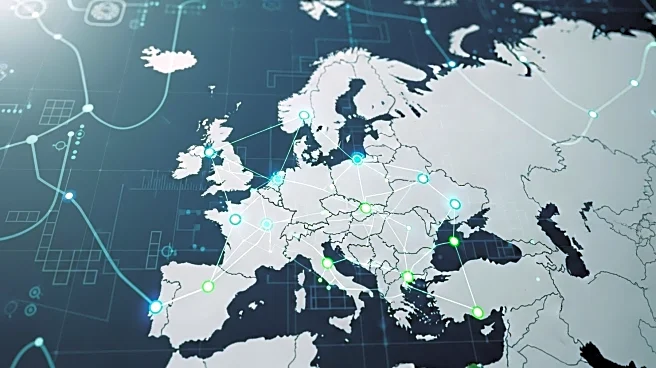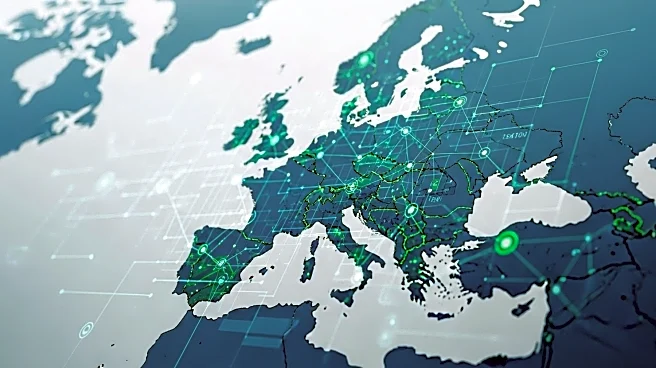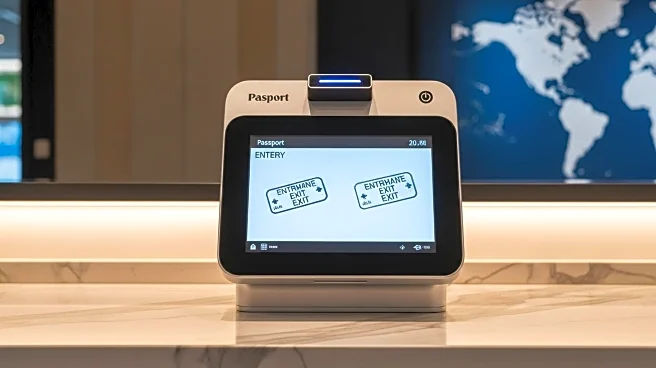What's Happening?
The European Union has initiated the rollout of a new digital Entry/Exit System (EES) at its external borders, aimed at electronically registering non-EU nationals' data. This system, which will be implemented over six months, requires travelers to scan their passports and undergo biometric verification, including fingerprinting and facial recognition. The initiative is designed to detect overstayers, combat identity fraud, and prevent illegal migration, responding to political pressures within the EU for stricter border controls. The system will replace traditional passport stamping with electronic records, and is expected to be fully operational by April 10, 2026.
Why It's Important?
The introduction of the EES represents a significant shift in how the EU manages its borders, potentially impacting millions of travelers and businesses. By enhancing security measures, the EU aims to better control migration flows and address concerns over illegal immigration. This system could streamline border crossings, reduce wait times, and improve data accuracy, benefiting both travelers and border authorities. However, it also raises privacy concerns and challenges related to data protection and the handling of biometric information.
What's Next?
As the system is gradually implemented, EU member states, travelers, and businesses will need to adapt to the new procedures. The transition period allows stakeholders to adjust to the changes, with specific measures in place for British travelers at key entry points like the Port of Dover and Eurotunnel terminal. The success of the rollout will depend on effective collaboration between EU countries and the UK, ensuring smooth operations and addressing any technical or logistical issues that arise.
Beyond the Headlines
The EES could set a precedent for other regions considering similar digital border systems, influencing global standards for border security and migration management. It may also prompt discussions on the ethical implications of biometric data collection and the balance between security and privacy.












